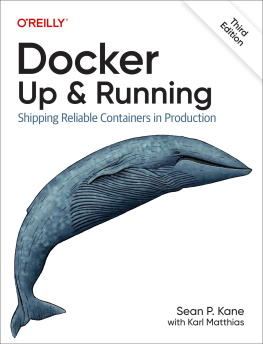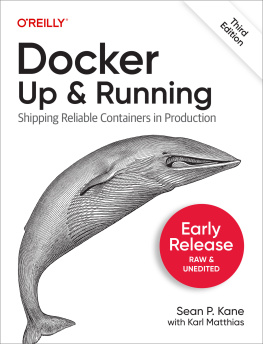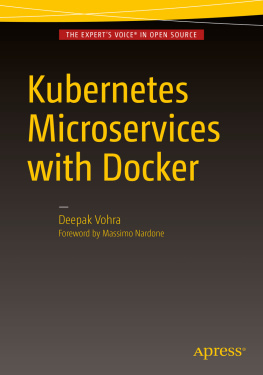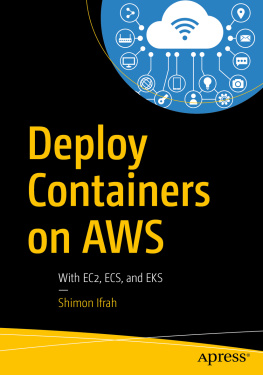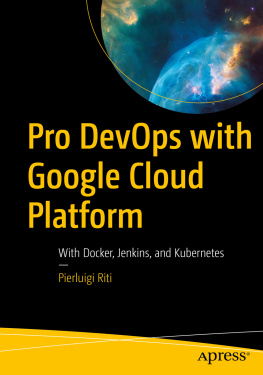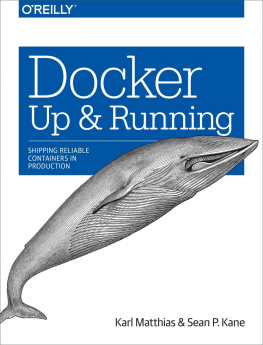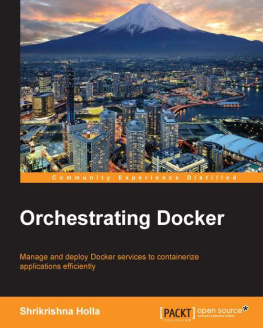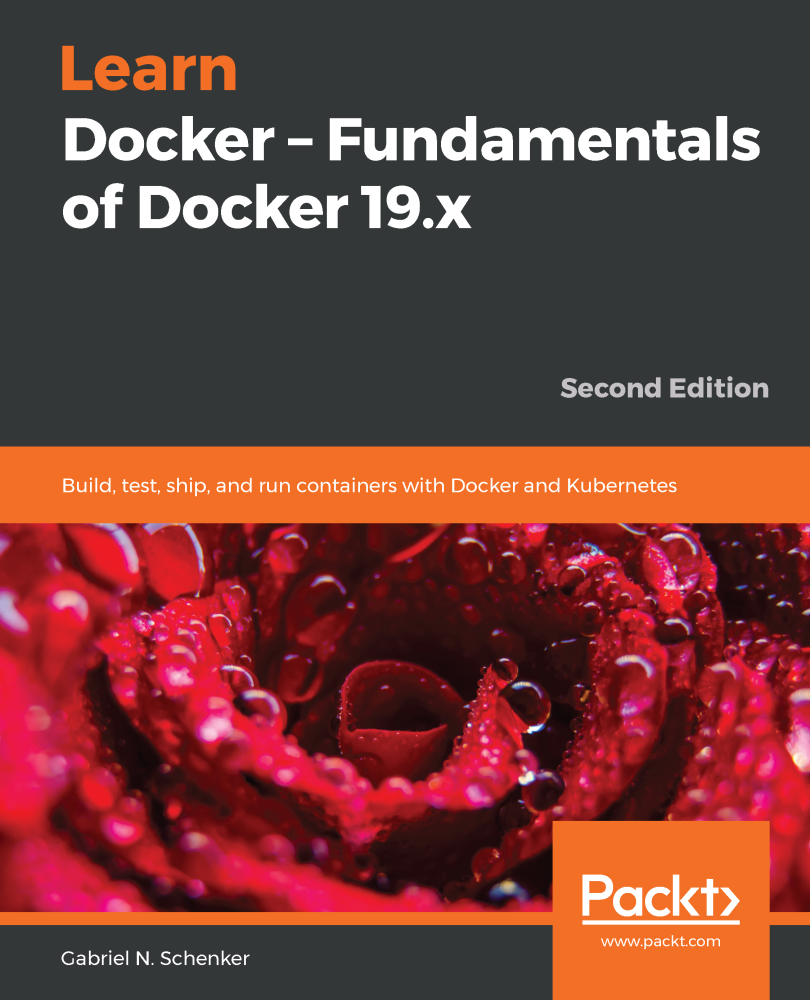
Learn Docker Fundamentals of Docker 19.x
Second Edition
Build, test, ship, and run containers with Docker and Kubernetes
Gabriel N. Schenker

BIRMINGHAM - MUMBAI
Learn Docker Fundamentals of Docker 19.xSecond Edition
Copyright 2020 Packt Publishing
All rights reserved. No part of this book may be reproduced, stored in a retrieval system, or transmitted in any form or by any means, without the prior written permission of the publisher, except in the case of brief quotations embedded in critical articles or reviews.
Every effort has been made in the preparation of this book to ensure the accuracy of the information presented. However, the information contained in this book is sold without warranty, either express or implied. Neither the author, nor Packt Publishing or its dealers and distributors, will be held liable for any damages caused or alleged to have been caused directly or indirectly by this book.
Packt Publishing has endeavored to provide trademark information about all of the companies and products mentioned in this book by the appropriate use of capitals. However, Packt Publishing cannot guarantee the accuracy of this information.
Commissioning Editor: Vijin Boricha
Acquisition Editor: Shrilekha Inani
Content Development Editor: Ronn Kurien
Senior Editor: Richard Brookes-Bland
Technical Editor: Sarvesh Jaywant
Copy Editor: Safis Editing
Project Coordinator: Neil Dmello
Proofreader: Safis Editing
Indexer: Tejal Daruwale Soni
Production Designer: Deepika Naik
First published: April 2018
Second edition: March 2020
Production reference: 1130320
Published by Packt Publishing Ltd.
Livery Place
35 Livery Street
Birmingham
B3 2PB, UK.
ISBN 978-1-83882-747-2
www.packt.com
Packt.com
Subscribe to our online digital library for full access to over 7,000 books and videos, as well as industry leading tools to help you plan your personal development and advance your career. For more information, please visit our website.
Why subscribe?
Spend less time learning and more time coding with practical eBooks and Videos from over 4,000 industry professionals
Improve your learning with Skill Plans built especially for you
Get a free eBook or video every month
Fully searchable for easy access to vital information
Copy and paste, print, and bookmark content
Did you know that Packt offers eBook versions of every book published, with PDF and ePub files available? You can upgrade to the eBook version at www.packt.com and as a print book customer, you are entitled to a discount on the eBook copy. Get in touch with us at customercare@packtpub.com for more details.
At www.packt.com , you can also read a collection of free technical articles, sign up for a range of free newsletters, and receive exclusive discounts and offers on Packt books and eBooks.
Contributors
About the author
Gabriel N. Schenker has more than 25 years of experience as an independent consultant, architect, leader, trainer, mentor, and developer. Currently, Gabriel works as Lead Solution Architect at Techgroup Switzerland. Prior to that, Gabriel worked as Lead Curriculum Developer at Docker and at Confluent. Gabriel has a Ph.D. in Physics, and he is a Docker Captain, a Certified Docker Associate, a Certified Kafka Developer and Operator, and an ASP Insider. When not working, Gabriel enjoys time with his wonderful wife Veronicah and his children.
I want to give special thanks to my editors, Ronn Kurien and Suzanne Coutinho, who patiently helped me to get this book done and get it done right.
About the reviewer
Francisco Javier Ramrez Urea is a technology enthusiast and professional, Docker Captain, casual developer, open source advocate, a certified trainer and solutions architect at HoplaSoftware, and a technical book writer and reviewer.
He is also a Kubernetes Certified Administrator, a Docker Certified Associate, a Docker Certified Instructor, and a Docker MTA program Consultant, as well as a Docker/Kubernetes and NGINX expert and a DevOps/CI-CD solutions integrator.
He currently works as a solutions architect focused on containers and microservices technologies. He is passionate to teach his students everything he know. Continuous learning is the main motivation of his career.
Packt is searching for authors like you
If you're interested in becoming an author for Packt, please visit authors.packtpub.com and apply today. We have worked with thousands of developers and tech professionals, just like you, to help them share their insight with the global tech community. You can make a general application, apply for a specific hot topic that we are recruiting an author for, or submit your own idea.
Preface
Developers are faced with ever-increasing pressure to build, modify, test, and deploy highly distributed applications in a high cadence. Operations engineers are looking for a uniform deployment strategy that encompasses most or all of their ever-growing portfolio of applications, and stakeholders want to keep their total cost of ownership low. Docker containers combined with a container orchestrator such as Kubernetes help them all to achieve these goals.
Docker containers accelerate and simplify the building, shipping, and running of highly distributed applications. Containers turbo-charge CI/CD pipelines, and containerized applications allow a company to standardize on one common deployment platform, such as Kubernetes. Containerized applications are more secure and can be run on any platform that's able to run containers, on premises or in the cloud.
Who this book is for
This book is targeted at system administrators, operations engineers, DevOps engineers, and developers or stakeholders who are interested in getting started with Docker from scratch.
What this book covers
, What Are Containers and Why Should I Use Them? , introduces the concept of containers and why they are so extremely useful in the software industry.
, Setting Up a Working Environment , discusses in detail how to set up an ideal environment for developers, DevOps, and operators that can be used when working with Docker containers.
, Mastering Containers , explains how to start, stop, and remove containers. We will also see how to inspect containers to retrieve additional metadata from them. Furthermore, we'll see how to run additional processes, how to attach to the main process in an already running container, and how to retrieve logging information from a container that is produced by the processes running inside it. Finally, the chapter introduces the inner workings of a container, including such things as Linux namespaces and groups.
, Creating and Managing Container Images
Next page

